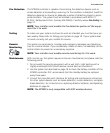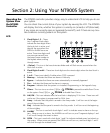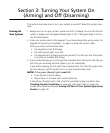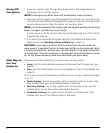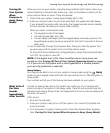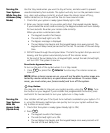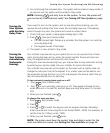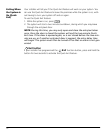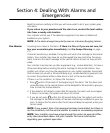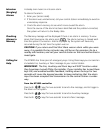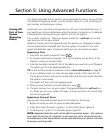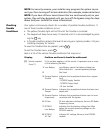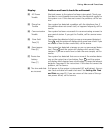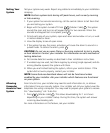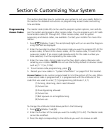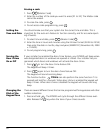
13
Section 4: Dealing With Alarms and
Emergencies
Read this section carefully so that you will know what to do if your system goes
into alarm.
If you return to your premises and the siren is on, contact the local author-
ities from a nearby safe location.
Your installer will tell you if fire detection equipment has been installed and
enabled on your system.
NOTE: A fire alarm always has priority over an intrusion (burglary) alarm.
Fire Alarms
A pulsing siren means a fire alarm.
If there is a fire, or if you are not sure, fol-
low your evacuation plan immediately (see Fire Escape Planning
on page
21
).
If remote monitoring is enabled, the system will send a fire message to the central
station. Your installer may have set up the keypad Fire keys and other fire equip-
ment to send a fire alarm message to the central station as soon as they are acti-
vated.
Your installer may have set up other equipment (e.g., smoke detectors) to have a
30 second delay before sending the alarm message to the central station. Your
installer will inform you how the equipment on your system operates. Equipment
that has been set up with a 30 second delay (e.g., smoke detectors) gives you time
to correct the problem before a false alarm is sent to the central station.
If there is no fire condition, to silence the fire alarm:
1. Press within 30 seconds of the beginning of the alarm. The fire alarm and
communication to the central station will be delayed for 90 seconds to give you
time to clear the smoke detector.
2. If the detector still detects smoke after 90 seconds, the alarm will sound again.
If there is no smoke, the system will return to normal.
3. If you do not press within the 30 second delay time, the system will send a
fire message to the central station (if remote monitoring is enabled on your sys-
tem). To silence the fire alarm after the 30 second delay has expired, enter your
[access code].
NOTE: If you suspect that a fire message has been transmitted, but there is
no fire condition, call the central station to avoid an unnecessary response.
NOTE: Your installer may have programmed the system to operate differ-
ently than described above. Ask your installer for more information
regarding your system’s operation.
#
#



